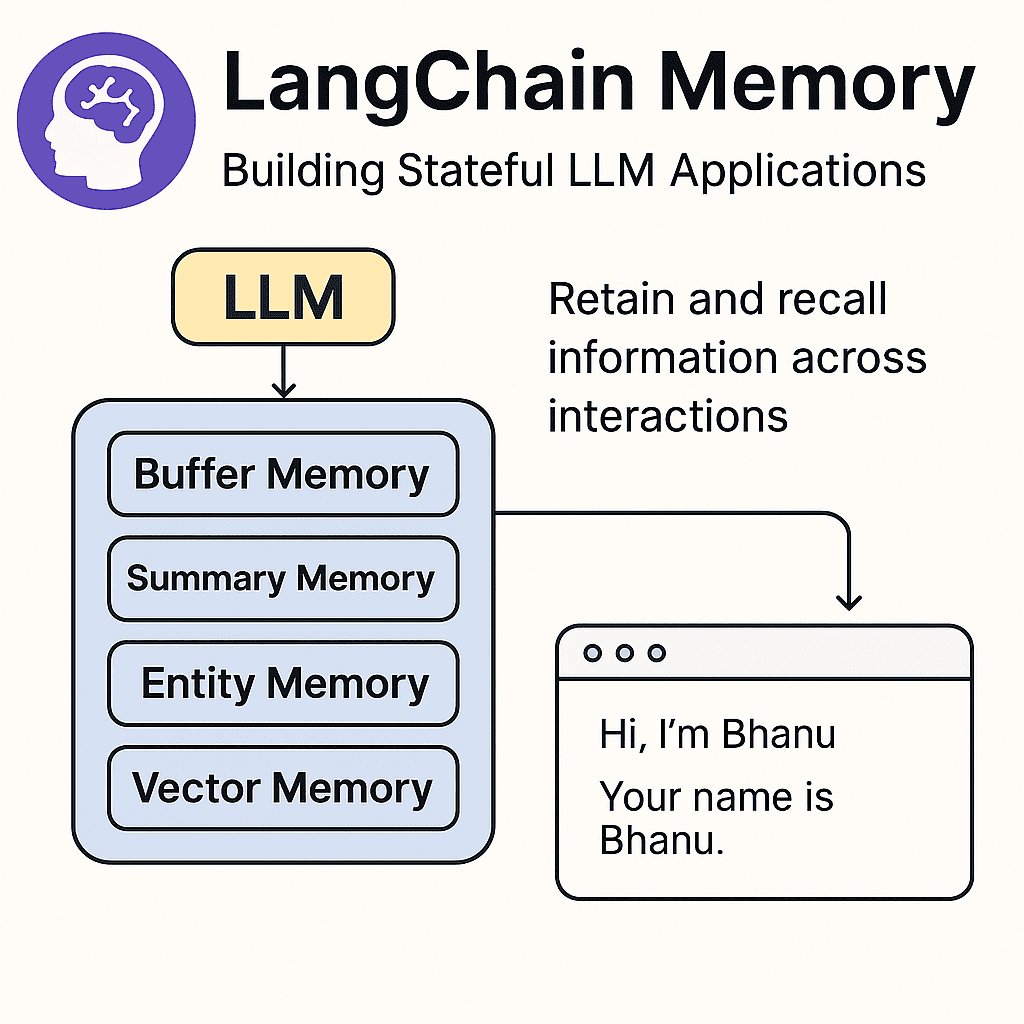
LangChain Memory: Building Stateful LLM Applications
by SuperML.dev,
Time spent: 0m 0s
Learn how to use LangChain Memory to retain and recall information across interactions — a vital feature for chatbots, virtual agents, and intelligent assistants.
✨ Why Memory Matters in LLM Apps
Large Language Models (LLMs) are stateless by default. Without memory, your assistant forgets everything after each prompt. LangChain solves this with powerful memory modules:
- 🗣️ Multi-turn conversations
- 🧠 Personalized interactions
- 🔄 Efficient context retention
🧩 Types of Memory in LangChain
| Memory Type | Purpose |
|---|---|
BufferMemory | Stores full conversation history as-is |
ConversationSummaryMemory | Summarizes past messages using an LLM for brevity |
EntityMemory | Tracks entities like names, topics, objects |
VectorStoreRetrieverMemory | Retrieves past data semantically using vector similarity |
Each memory type fits different needs — from long-term factual recall to short-term conversational continuity.
🛠️ Hands-On Example: BufferMemory
import { ConversationChain } from "langchain/chains";
import { ChatOpenAI } from "langchain/chat_models/openai";
import { BufferMemory } from "langchain/memory";
const memory = new BufferMemory();
const chain = new ConversationChain({ llm: new ChatOpenAI(), memory });
await chain.call({ input: "Hi, I'm Bhanu" });
await chain.call({ input: "What’s my name?" });Output: “Your name is Bhanu.”
The assistant remembers context across turns using memory.
When to Use Each Memory
- Use BufferMemory for raw dialogue retention
- Use ConversationSummaryMemory when saving tokens matters
- Use EntityMemory to build topic-aware agents
- Use VectorStoreRetrieverMemory in document Q&A bots
Memory can be attached to Chains, Agents, or even Tools.
Related Tutorials
🔗 Hands-On: LangChain Prompt Templates
Enjoyed this post? Join our community for more insights and discussions!
👉 Share this article with your friends and colleagues 👉 Follow us on